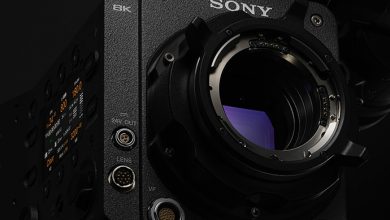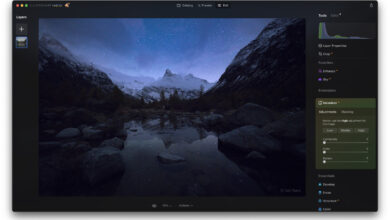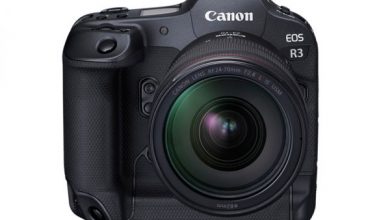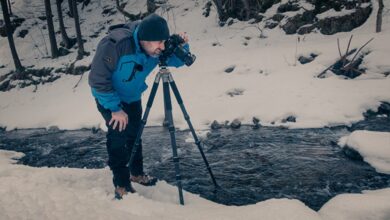We Review the Top-of-the-Range OM System M.Zuiko Digital ED 150-400mm F4.5 TC1.25X IS PRO
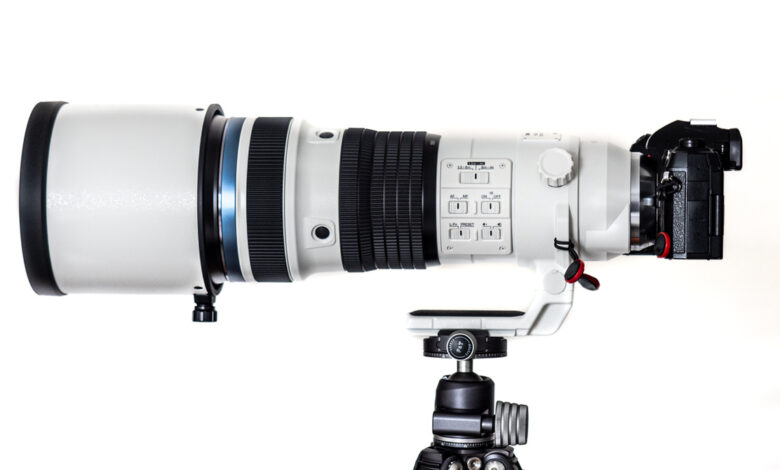
I’ve always wanted to get into wildlife photography. Although no expert, I love taking pictures of birds. So, when I was in the position to invest in one of the best lenses on the market today, I jumped at the chance.
It’s only recently that the OM System M-Zuiko Digital ED 150-400mm 1:4.5 TC 1.25x IS PRO has become widely available. OM Digital Solutions was overwhelmed by the demand for the lens when it was first released, which was far, far higher than anticipated. Then, with the subsequent release of the OM-1, the combination of that camera and this lens produced something that wildlife photographers previously only dreamed of: exceptional image quality and portability.
What Does That Name Mean?
Yes, that name is quite a mouthful, isn’t it? However, it is descriptive of what the lens is.
M-Zuiko refers to it being a Micro Four Thirds lens under the Zuiko (Light of the Gods) brand name first used in 1936. Digital is obvious. ED refers to the Super ED lens elements. It is comprised of 28 lens elements in eight groups, including one EDA, four ED, two ED, 2 HR, and one HD, with OM System’s excellent Z Nano Coating.
1:4.5 means this lens has a constant f/4.5 aperture across its entire zoom range. This goes up to f/5.6 when one engages the internal 1.25x teleconverter, which is what the TC 1.25x means. IS refers to the built-in image stabilization. Combined with the five-axis In-Body Image Stabilization (IBIS) of the OM-1, you get eight stops of stabilization. PRO means it is a professional-grade lens.
Unboxing the OM System M-Zuiko Digital ED 150-400mm 1:4.5 TC 1.25x IS PRO

The lens arrived boxed well packaged. For a premium product, it’s what you would expect. However, I didn’t open it until I was sure my business insurance had it covered. I had a nightmare thought of it slipping out of my hands and crashing onto my kitchen’s unforgiving quarry-tiled floor.
With insurance in place, I fitted the lens to my OM-1 and was about to go out birding when it started to rain for three days. The lens is IP53 weather-sealed, the same as the camera, and I have no objection to getting wet, but it wasn’t ideal conditions for a first shoot when I would be testing it. So, my next few days of frustration were spent playing with the lens indoors to see how it worked and what I could achieve with it.
First Observations of the Lens
The lens is bigger than any other lens I have owned. However, at just 12.4 inches long (31.43 cm,) it’s still far smaller than the closest equivalents from other brands. I say “closest” because as far as I can see, there is no other lens that combines that fast aperture for an 800mm full frame equivalent lens, let alone a 1000mm equivalent with the teleconverter activated, certainly not with these dimensions and weight (just 1.87 KG), with the professional level performance of sharpness and focussing speed, and with built-in image stabilization too.

The light weight is partly achieved by the lens’ alloy barrel construction. It is white, which helps with heat dissipation. The zoom and focus rings are rubberized with good grips. They are wide too, making them easy to operate even when wearing thick gloves. The two rings move with equal resistance, which is just enough, and there is no sudden lurch when you start to turn them. I found that I could turn the zoom ring with my thumb and forefinger, and the focus ring with my ring and little fingers, without changing my grip.
Focus and zooming is carried out inside the lens. Therefore, the lens stays a fixed length during operation, and I could not detect any change in balance.
The zoom turns from 150mm to 400mm in a quarter of a turn, making it very fast to zoom in. Manual focusing from 1.3 meters to infinity requires a similar quarter turn. Consequently, both of these actions can be accurately performed in a single movement.
Between those two rings are programmable L-Fn buttons. These can be set to one of many different functions. With my camera’s custom mode set up for wildlife, I program them to turn the camera’s subject detection on and off.

On one side of the lens are five switches.
The first of these adjusts the focusing limits. There is a choice of 1.3 meters to 6 meters, from 6 meters to infinity, and from 1.3 meters to infinity. Note that it has an exceptionally close minimum focusing distance of 1.3 meters that applies across the entire focal range, including with the teleconverter activated.
Next, there’s an AF/MF switch, an image stabilization on and off button, and a switch to turn the focus notification beep on; I always leave the beep turned off.
The L-Fn/PRESET switch changes the function of the L-Fn buttons in the left-hand position. Then, in its PRESET position, it changes the buttons’ function to lock focus at a pre-determined distance. That distance is programmed by using the set button which is on the other side of the lens, just above the teleconverter switch.

I operate the teleconverter button with my right-hand middle finger, which I can do with my forefinger on the camera’s shutter release button. It moves with a reassuringly solid action and can be locked into place with a sliding switch.
There is a tripod mount collar with an integral ArcaSwiss compatible foot that perfectly balances the lens and OM-1. The collar unlocks by loosening a knob and rotates. With each 90-degree turn, there is a solid stop.

The lens takes 95mm filters. There are also two strap loops. I fitted my Peak Design strap anchors to these. The metal lens hood is reversible for storage and the lens cap is inside a padded nylon cover that fits around the hood and is fastened with Velcro. There is also a wider, more padded strap provided than the one that comes with the OM-1. The lens was also supplied with a high-quality carrying bag.

As you probably gather, this is a fabulous lens and a lot of work has gone into its design. It’s solidly built but incredibly light for what it is. I’ve been shooting with photographers who own Sony and Canon full frame cameras, and they were amazed by its lightness, usability, and ease with which it could be handheld.
The OM System M.Zuiko Digital ED 150-400mm F4.5 TC1.25X IS PRO in Use
I consider myself a novice wildlife photographer. Real wildlife photographers know the Latin names of what they photograph, as well as the behaviors of their different subjects. It is something I want to improve because I really enjoy being out in nature and seeing wildlife. I am a great believer in having the best possible equipment. That is why I bought this lens, and it has impressed me.

Mostly, I am going to be photographing birds, including birds in flight. I found this camera and lens combination quick to lock onto the subject, even when it was partially obscured or on a cluttered background. I used twelve focus points in a cross formation with continuous autofocus, tracking, and subject detection switched on.

Focusing was fast and accurate. Using continuous shooting, it only occasionally missed a frame or two with fast-moving birds when there was a busy background, but mostly, it tracked and stayed in focus.
There are some situations where any camera would struggle to find a subject. For example, I used it as a digital spotting scope to identify distant birds on a far rocky shoreline. It was an impossible situation for any bird detection to work. So, I swapped the camera to manual focus and then used the focus assistance and tried using one focusing point and single autofocus. Both worked well.
On another occasion, in low light before sunrise, I photographed some roosting turnstones that were partially obscured by rock. The focus was perfect.
Where my colleagues with larger camera formats relied on monopods or tripods, handholding was no issue for me with this lens. Firstly, the rig was light enough to carry for long periods without discomfort. Secondly, the image stabilization made it superb to stay on the subject. Furthermore, holding it up to my eye for long periods was painless.

Changing the switches on the body of the lens could be done without looking. To do that, of course, takes a little while to learn which switch is which. It was reminiscent of learning a new chord pattern on my guitar. With practice, it becomes second nature.
Image Stabilization Tests
With this lens on the OM-1, I was able to handhold the camera for one second at 150mm and 1/4th of a second at 400mm, albeit sitting down and resting my elbows on a solid surface. Free standing and not leaning against anything, I achieved 1/5th of a second at 400 mm. In a real-world situation, I am unlikely to work to those extremes; I’m usually aiming for at least 1/1,600th for photographing birds and increasing the ISO in low light. Needless to say, when I was out in the field, none of my images suffered from camera shake.
Image Quality of the OM System M.Zuiko Digital ED 150-400mm F4.5 TC1.25X IS PRO
As I expected for a lens at this price point, I was blown away by the sharpness of this lens when shooting wide open right across the focal length range.
I watched one review that pixel-peeped a comparison between this lens and the OM System 300mm f/4 prime lens, and the reviewer detected a tiny difference with the 300mm. In my tests, I couldn’t see it; the images were perfectly sharp. Nevertheless, one would always expect a prime lens to be sharper than a zoom. Everything in photography is a compromise. However, those professional photographers that I know who own both, now solely use the 150-400mm. It was their advice that persuaded me to buy this lens and not the 300mm f/4 prime.
There was a very slight softening on some of the photos when I activated the 1.25x teleconverter, but I had to pixel-peep to see that. Furthermore, it was nothing that could not be corrected in software.
There was no sign of lens distortion, and I only detected a slight vignetting with the teleconverter activated at 500mm. This was automatically fixed by PhotoLab 6.
Color rendering through the lens was great, and I would not anticipate anything less because of the OM System’s Olympus heritage; it is a brand well liked for its color rendering.
The out-of-focus area was pleasant, too, thanks to the nine rounded aperture blades.

What I Liked and What Could Be Improved
What I Liked
- Image quality
- Image stabilization that works in conjunction with the camera’s IBIS giving a total of eight stops
- Relatively small size and weight
- Exceptional build quality that combines lightness with robustness
- Easy to reach and use controls
- Absolutely silent in use
- Fast and accurate focusing
What Could Be Improved?
- There was single-use plastic in the packaging which could be reduced
My Conclusions About the Lens
There were two more things I didn’t like, but it’s not the fault of the lens. Firstly, other people, not just photographers, keep stopping me to ask me about the lens and distracting me from taking photos. I’ve missed a lot of shots because of that.

Secondly, because I am a novice wildlife photographer, I am employing the OM-1’s Pro-Capture, which buffers images so I capture the action before I fully press the shutter. I am also using continuous shooting. At the OM-1’s 50 frames per second with continuous autofocus, I am spending a lot of time culling images. But, I am getting photos I am very pleased with.

This is the best lens I’ve ever used, and at its price point, I would not have expected anything less. It’s not a cheap lens, but one would not expect it to be. You can buy the lens here.

Be quick, because there is still limited stock and there is an ongoing high demand. It has certainly inspired me to photograph wildlife.
